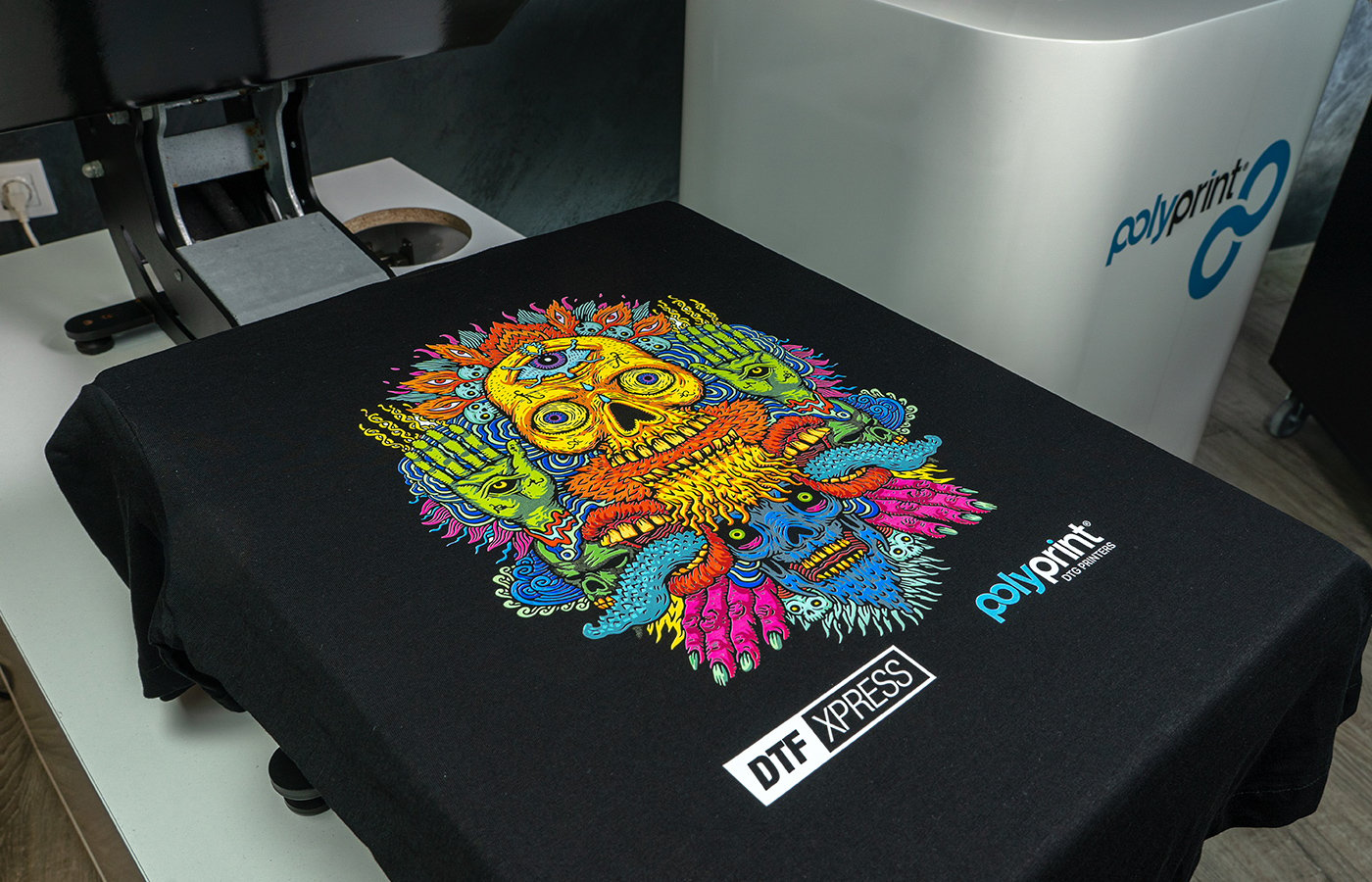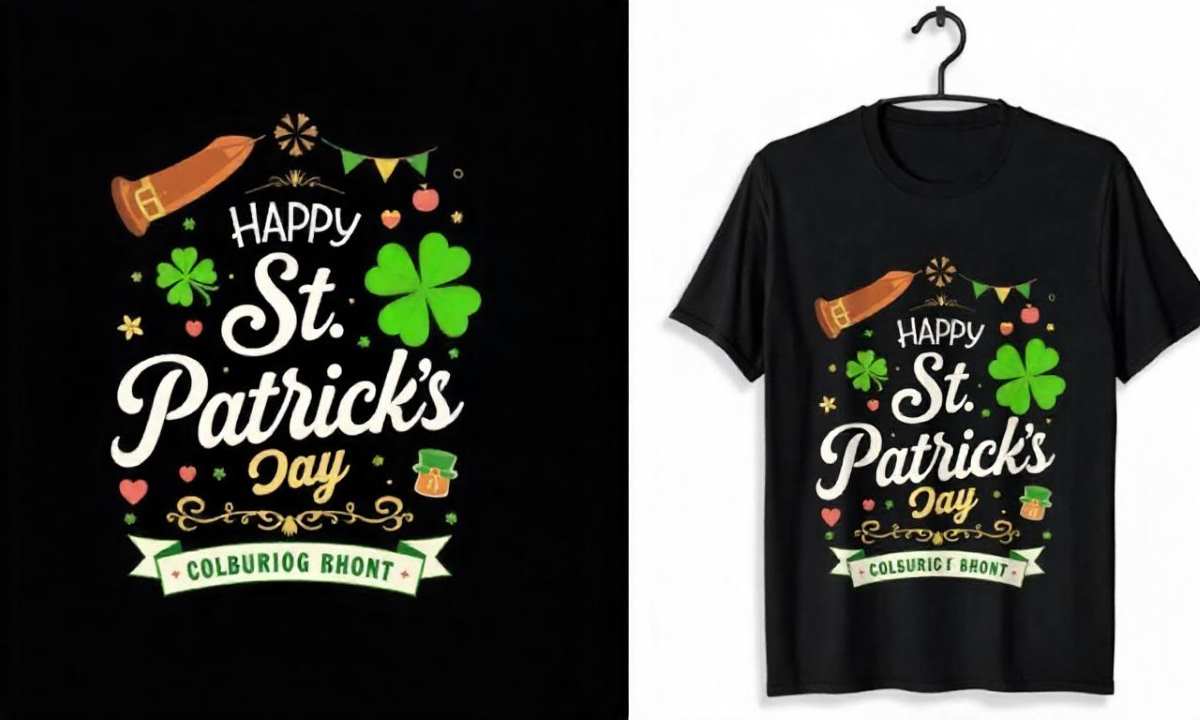DTF printing, or Direct-to-Film printing, is revolutionizing custom apparel printing with its remarkable capabilities and efficiency. This cutting-edge method allows for vibrant, high-quality prints that can be seamlessly transferred onto various fabrics, making it a game-changer in the industry. As businesses and creators increasingly seek out DTF supplies and direct to film printing tools, the demand for quality DTF printing equipment has surged. Understanding the DTF printing process is essential for anyone looking to elevate their printing game and produce stunning designs that truly stand out. In this guide, we will delve into the key components necessary for mastering DTF printing, allowing you to express your creativity and optimize your production workflow.
The realm of Direct-to-Film technology encompasses a plethora of innovative printing techniques designed to enhance custom apparel creation. Utilizing advanced printing tools, this method transforms vibrant digital designs into impressive fabric prints that are both durable and eye-catching. As enthusiasts explore their options in this specialized field, they often seek out essential supplies tailored for this unique transfer printing approach. Through our comprehensive overview, we will explore the integral tools and processes that define the DTF printing experience, paving the way for creators to unlock their potential in apparel decoration. Embracing this modern technique not only broadens creative horizons but also positions businesses to meet growing market demands.
Understanding DTF Printing Process
DTF printing, or Direct-to-Film printing, is an innovative technology that revolutionizes how designs are applied to fabrics. This process begins with printing a design onto a specially coated transfer film using a dedicated DTF printer. The beauty of this method lies in its ability to produce vibrant colors and intricate details that can withstand extensive wash cycles. Once printed, the film is sprinkled with a special adhesive powder, which bonds with the ink when subjected to heat during the transfer process.
The DTF printing process is highly effective for various fabrics, including cotton, polyester, and blends. It not only retains the original quality of the fabric but also allows for excellent color vibrancy and durability. As businesses invest in DTF technology, they can expect rapid production times and heightened customer satisfaction, thanks to the quality of the prints. As the industry grows, understanding the nuances of the DTF printing process becomes essential for achieving optimal results.
Key DTF Supplies for Efficient Printing
To successfully implement DTF printing in your business or creative endeavors, several essential supplies are required. First and foremost is the DTF printer itself, which must be compatible with the specific transfer films you’re using. The printer’s capabilities directly affect the quality of the final output; therefore, choosing a device that offers high resolution and efficiency is crucial. Additionally, the transfer film used must be tailor-made for DTF applications, ensuring that it adheres well to the ink and provides a vibrant print.
Another critical supply is the DTF ink, which should be of high quality to guarantee exceptional color performance. Water-based inks are favored for their eco-friendliness and adhesion properties. Furthermore, adhesive powder, heat presses, and weeding tools complete the toolkit necessary for an impeccable printing experience. Each of these components plays a vital role in ensuring that your designs come out beautifully, making your understanding of DTF supplies a step towards mastering this printing technique.
Choosing the Right DTF Printing Equipment
Selecting the right DTF printing equipment is pivotal for achieving satisfactory results. At the forefront is the DTF printer, which should stand out for its print speed and resolution capabilities. A printer that supports various media types allows for greater versatility in your printing projects, enabling the creation of stunning custom apparel easily. Investing in reliable DTF printing equipment ensures consistent performance and high-quality output, critical for meeting customer demands.
Beyond the printer, the heat press is vital to successfully transfer images to fabric. The right heat press should offer adjustable settings for temperature and pressure. Precise control during application can significantly improve the quality of the final product. Similarly, quality control extends to selecting the right adhesive powder, which is crucial for achieving durable prints that can withstand multiple washes and wear and tear.
The Importance of Quality DTF Inks
High-quality DTF inks are indispensable for producing durable and vibrant prints. Unlike traditional inks, DTF inks are specially formulated to provide excellent adhesion to the transfer film and a lasting finish on the fabric. This attribute is particularly important for custom apparel printing, where the visibility of colors and durability can make or break a design. Investing in top-tier DTF inks assures effective color reproduction and resistance to fading, ensuring that your prints maintain their appeal over time.
Moreover, water-based DTF inks are becoming increasingly popular due to their eco-friendly characteristics. As consumers grow more environmentally conscious, using sustainable inks can attract a broader customer base, providing a competitive edge in the market. Thus, the importance of quality DTF inks cannot be overstated, as they not only enhance the aesthetic appeal of prints but also align with current trends in sustainability.
Adhesive Powder: The Key to Successful Transfers
Adhesive powder is a crucial component in the DTF printing process, acting as the binding agent that ensures prints adhere effectively to fabric. When sprinkled onto wet ink during the transfer process, this powder activates under heat, creating a strong bond between the design and the surface material. Choosing quality adhesive powder that is specifically designed for DTF applications can significantly influence the final product’s durability.
Moreover, the type of adhesive powder selected can impact the texture of the print. Different powders may yield different finishes; for instance, some may produce an almost invisible bond, while others might leave a noticeable feel on the fabric. It is essential to conduct tests to determine which adhesive powder complements the intended design and fabric type, ensuring that every print not only looks great but lasts over time.
Emerging Trends in DTF Printing
As DTF printing technology evolves, several trends have begun to shape its future in the custom apparel printing industry. One notable trend is the increasing shift towards eco-friendly practices, with many brands seeking sustainable inks, reusable films, and recyclable materials. This shift speaks to the growing environmental consciousness among consumers and businesses alike, prompting printing companies to adopt practices that minimize their ecological footprint.
Another trend is the continuous development of DTF printing equipment, which now boasts faster speeds and higher print resolutions. These advancements enable businesses to meet high customer demands without sacrificing quality. As competition intensifies, staying updated with the latest trends in DTF printing will not only help in improving operational efficiency but will also enhance brand reputation and customer loyalty.
Frequently Asked Questions
What is DTF printing and how does it work?
DTF printing, or Direct-to-Film printing, is an innovative custom apparel printing method where designs are printed onto a special transfer film. This film is then applied to fabrics using a heat press, creating vibrant, durable prints. The process utilizes a specialized DTF printer, compatible inks, and adhesive powders to achieve high-resolution images that withstand wear and washing.
What DTF supplies are essential for successful printing?
To successfully execute DTF printing, essential supplies include a DTF printer, transfer film, DTF inks, adhesive powder, a heat press machine, and weeding tools. Choosing high-quality components ensures crisp designs and lasting durability in custom apparel printing.
How do DTF inks differ from traditional inks used in printing?
DTF inks are specially formulated for the DTF printing process. They are typically water-based and include adhesives that help adhere the printed design to fabrics. This unique composition allows for vibrant colors and durability, vital for custom apparel compared to traditional inks.
What role does adhesive powder play in the DTF printing process?
Adhesive powder is crucial in DTF printing as it activates during the heat application, bonding the printed ink to the fabric. Selecting a high-quality adhesive powder designed for DTF applications ensures strong adhesion and durability in your final print.
What features should I look for in DTF printing equipment?
When selecting DTF printing equipment, consider factors such as the print speed, resolution capability, and compatibility with various transfer films for your DTF printer. Additionally, a reliable heat press with adjustable temperature and pressure settings is vital for achieving consistent results.
Can DTF printing be used on all fabric types?
Yes, DTF printing is versatile and can be used on a wide range of fabric types, including cotton, polyester, and blends. However, some fabrics may require special treatment or protective layers to ensure optimal results and durability of the prints.
| Tool | Description | Importance |
|---|---|---|
| DTF Printer | A specialized printer that uses inkjet technology to print directly onto transfer films. | Produces high-resolution images and is crucial for accurate color reproduction. |
| Transfer Film | Coated film that receives ink and ensures vibrant colors in prints. | Quality affects final print outcome; needs to be compatible with the printer’s inks. |
| DTF Ink | Water-based inks formulated with adhesives for strong transfer quality. | Essential for producing durable, high-quality prints. |
| Adhesive Powder | Powder applied to wet ink that bonds it to the fabric after heating. | Crucial for achieving strong, lasting prints. |
| Heat Press | Equipment that applies heat and pressure to transfer designs onto fabric. | Ensures consistent results and optimal quality in prints. |
| Weeding Tools | Tools used to remove excess film around printed designs. | Important for achieving a clean and professional finish. |
| Protective Layer | Optional treatment that adds a coating for enhanced print durability. | Helps designs last through washings and wear. |
Summary
DTF printing is revolutionizing the way custom apparel is produced, providing businesses with an effective and efficient printing solution. This innovative technology not only enhances the vibrancy and durability of prints but also offers remarkable speed and versatility in production. By understanding the critical tools involved in DTF printing, including specialized printers, quality inks, and adequate transfer materials, users can achieve impeccable results that resonate with customers. Adopting DTF printing can significantly boost a brand’s reputation by delivering stunning apparel that withstands the test of time, solidifying a competitive edge in the ever-evolving design market.



